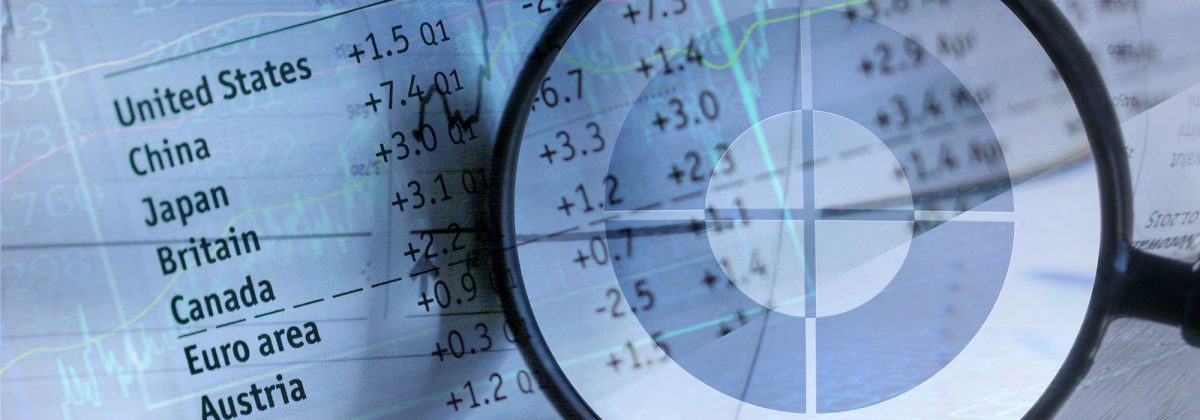The US Q1 GDP Report is Out: Will it Alleviate Recession Fears?

Recently the news has been rife with reports and predictions that the US economy is fast approaching a recession. The ongoing trade war with China is cited as the main driver and there’s no denying that it is posing a serious threat to the country’s economy.
A poll conducted by Reuters showed that the median probability of an upcoming recession, had increased to 25%. Another survey by the National Association for Business Economics, which makes economic predictions on the basis of its 281 members, revealed that 75% of its economists expected a recession for the nation by the end of 2021.
The slowdown of the US housing market also pointed towards an approaching economic storm. However, some of the anxiety of the market participants has been eased by the Q1 Gross Domestic Product report.
Let’s take a look at what the report has to say about the growth of the US economy.
Important Numbers from the Q1 GDP Report
The Q1 GDP report, published by the US Bureau of Economic Analysis (BEA) on April 26, 2019, has given some positive signals for the economy.
It suggests that the US economy is actually getting stronger. The Q1 readings reveal a growth rate of 3.2%, which is much stronger than the earlier expected 2.1%. This is the best start to the year for the US economy since 2015, with GDP growth exceeding 3% for the first time since 2015.
The growth rate released through the Q1 report is still a first estimate and could be revised when more data is made available in the coming weeks. The BEA stated that the growth could have been stronger if it hadn’t been for the government shutdown that shaved off 0.3 percentage points from the first quarter’s growth rate.
Exports grew 3.7% during Q1, while imports declined by the same amount, 3.7%. Prices saw an increase of 1.3%, excluding energy and food, while the overall increase stood at 0.8%. Disposable personal income rose 3%.
What Does it Say About the US Economy?
The GDP report has a number of takeaways for market participants.
1. Reason for GDP Performance
Firstly, the growth was partly driven by higher inventories, specifically in the manufacturing sector. This shows that businesses have been stockpiling goods, rather than selling them. A possible negative indication of this can be slower growth in the second quarter, but things are stable for now.
2. Decrease in Domestic Sales
Domestic private sales, which removes imports, exports and government spending for its calculation, slowed down to half the rate as that for the previous quarter. This is the smallest gain seen in domestic private sales in the last three years.
3. Federal Spending
Federal spending was low, with the rise in military spending being balanced out by a decrease in non-defence spending. The main contribution for local and state government spending came from the construction of roads and highways.
4. Collapse of Imports
Imports collapsed, to some extent due to the trade tariffs imposed by the Trump administration. The tariffs had earlier led to a rush for businesses to bring in goods from overseas.
“With stock rooms and backlots now filling up, businesses saw no reason to buy more,” explained Bernard Baumohl, chief global economist for the Economic Outlook Group. “Worse, many companies now fear it will take far longer to unload all this inventory, given the apparent underlying weakness in consumer and business demand,” Baumohl added.
5. Consumer Spending
Consumer spending slowed down, as reflected in weakening sales. The biggest boost for business investment came from intellectual property products. These investments increased by a significant 8.6%.
Exports are expected to slow down going forward, due to challenges posed by a strengthening dollar.
Reasons for a Renewal of Optimism
Two main factors might be responsible for the renewed faith in the US economy:
- The efforts made by China to stabilise their falling economy is alleviating the fears of a global economic slowdown. Talks between the US and China are also advancing towards a trade deal and this has decreased the risk of a new round of tariff wars.
- The most important factor in the recovery has been the Federal Reserve. Markets began to stabilise, while stock prices increased, after Fed chairman, Jerome H. Powell’s comment. In January 2019, Powell had stated that the Fed would be “patient” before it raised interest rates once again, after the four increases made in 2018.
What Does it Mean for Investors?
The Q1 figures comes as a relief for investors, after being haunted by the ghost of recession due to the US-China trade war, which led to the market hitting record lows in Q4 of 2018. All three major indices have recovered from their losses and the S&P 500 recently hit a new record high.
Economists have predicted that, on the whole, the US economy would grow 2.4% in 2019, a forecast that is not expected to change despite the robust Q1 GDP growth.
Talking about the next quarter, economic forecasters are lowering their expectations. The economics team at Morgan Stanley has revised its Q2 estimate to 1.1%, citing the build-up in inventories as the reason.
One thing that has been holding back expectations is consumer spending. It forms around 70% of the US economy, but only grew at a meagre rate of 1.2%. This is the weakest growth since the first quarter of 2018. In order to keep the entire economy firing on all cylinders, there is a need for consumer spending to grow at a faster pace.
Many analysts are keeping a close watch on the global economy, which can have negative impacts on US growth. The International Monetary Fund has recently reduced its global GDP forecast from 3.5% to 3.3% for 2019.
While the fears of a recession have been kept at bay for the time being, there is still a need to be aware of any rapid changes in the global economic landscape. If the US economy continues to expand in the next quarter, it will be a record run of expansion for the nation. This could help remove the clouds of uncertainty regarding sustainable growth.
Reference Links
- https://edition.cnn.com/2019/04/26/economy/us-gdp-report-q1/index.html
- https://www.nytimes.com/2019/04/26/business/economy/gdp-economy.html
- https://www.bea.gov/news/2019/gross-domestic-product-1st-quarter-2019-advance-estimate
- https://www.bea.gov/system/files/2019-04/gdp1q19_adv_0.pdf
- https://www.cnbc.com/2019/04/26/gdp-q1-2019-first-read.html




